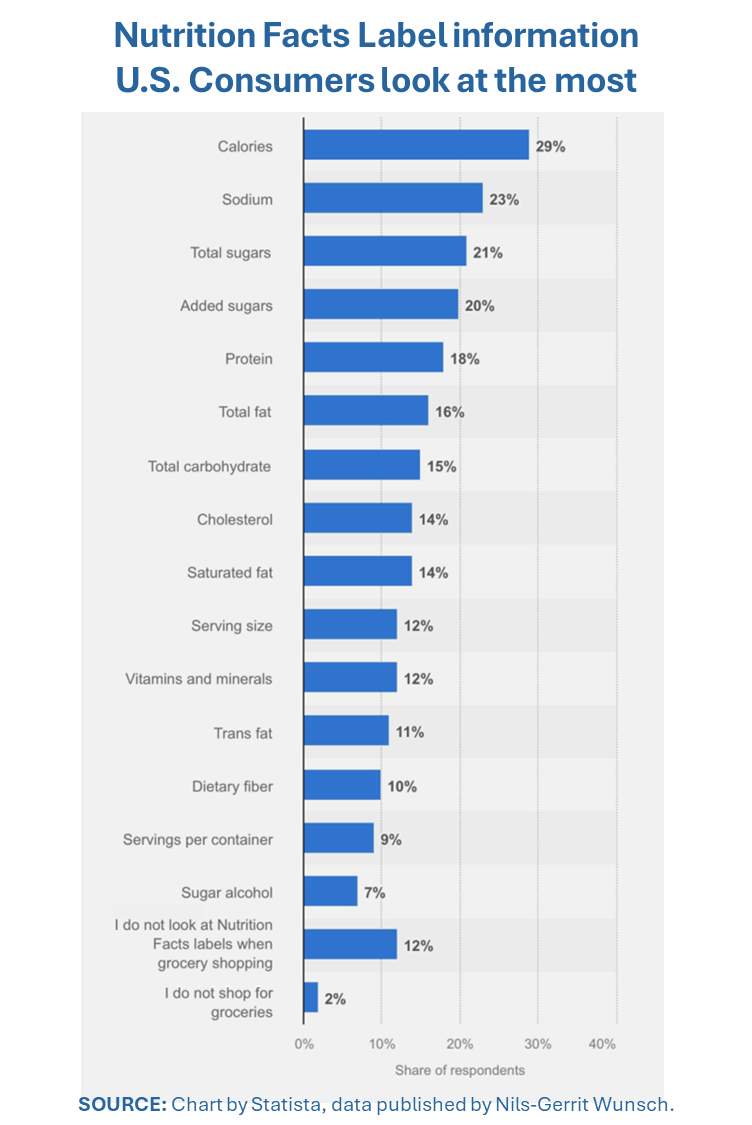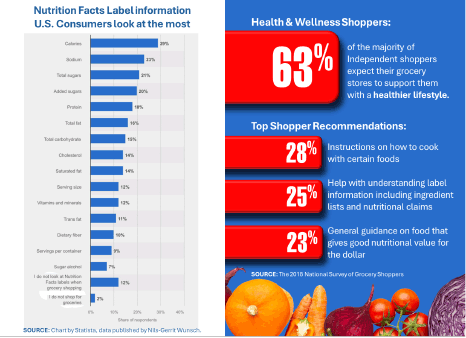Let’s start with a question.
If your grocery store has a “healthier” food section, what does that make the rest of the store?
 Do you have an answer?
Do you have an answer?
In today’s health-conscious world, consumers are increasingly demanding transparency and “better choice” food options on every shelf. They’re examining ingredient lists, checking sourcing details, and comparing nutrition labels. And while grocery stores have adapted by creating dedicated “healthier food” sections, the question inevitably arises: If there’s a designated “healthier” aisle, what does that say about the rest of the store?
From a marketing agency’s perspective, this presents both a challenge and an opportunity. The challenge lies in shifting consumer perceptions around what “healthier” really means—and where it should be found. On the flip side, there’s opportunity for brands to transcend these distinctions and offer products that reflect the evolving, holistic view of what constitutes wellness and good eating practices.
The Evolution of “Health” in Grocery Marketing
 Health-focused shopping trends have evolved from niche to mainstream, largely due to rising awareness of dietary impacts on health, the environment, and ethical considerations. Think how “organic” went from being a designator used by just a few brands to being ubiquitous today! Consequently, more consumers are expecting brands to uphold standards not only in specialized “healthier” aisles but throughout the entire store. As this trend continues to unfold and more mainstream brands begin to adopt healthier product profiles, brands currently catering exclusively to health-conscious shoppers could eventually find themselves struggling to stand out in an increasingly competitive, health-integrated market.
Health-focused shopping trends have evolved from niche to mainstream, largely due to rising awareness of dietary impacts on health, the environment, and ethical considerations. Think how “organic” went from being a designator used by just a few brands to being ubiquitous today! Consequently, more consumers are expecting brands to uphold standards not only in specialized “healthier” aisles but throughout the entire store. As this trend continues to unfold and more mainstream brands begin to adopt healthier product profiles, brands currently catering exclusively to health-conscious shoppers could eventually find themselves struggling to stand out in an increasingly competitive, health-integrated market.
For marketers, this will demand a shift in approach: promoting health benefits isn’t just about singular items or a particular section of the store anymore. It means that brands currently not in the ‘better choice’ space will need to consider either aligning their product lines with these expectations or begin introducing line extensions that will deliver against this need. Even brands historically associated with indulgence can get into the game by stretching outside their traditional boundaries with healthier line extensions – think protein enriched Snickers bars.
 Elevating the Meaning of “Healthier” as a Point of Difference
Elevating the Meaning of “Healthier” as a Point of Difference
One way that brands can leverage this shift is to aim for universal appeal through use of both healthier and sustainable practices. As “healthier” becomes “cost of entry” | an assumption rather than a differentiator, brands will be pushed to adopt transparency, clean labeling, and sustainable sourcing as a point of difference for their products. Marketing campaigns will no longer be able to rely on the “healthier” label alone; instead, they will need to showcase specific values like environmental responsibility, ethical sourcing, nutritional integrity and functional, lifestyle and emotional value – not to mention good taste and flavor.
In practice, this might mean promoting health benefits or sustainability practices in every type of product, from chips to beverages, enabling brands to move past the more generic “healthier” label and appeal to the broader wellness movement in mainstream, impactful ways.
 Building Trust Beyond the “Health Food” Section
Building Trust Beyond the “Health Food” Section
Shoppers are quick to see through labeling tactics that relegate healthy or “natural” foods to one section of the store while leaving other aisles untouched by these standards. They want reassurance that they can trust the entire store and all of its offerings. In response, marketers should focus on cultivating trust by making the values behind health claims evident across all product categories.
This approach fosters a stronger brand reputation, one that says: Every aisle is the “health food” aisle. Brands that embrace this model build not only consumer trust but loyalty, as shoppers come to rely on their standards across every purchase.
“We asked some specific questions about loyalty to brands, and 80% said that they are more loyal to a brand that does provide that in-depth product information to them and 73% said that they’re willing to switch to that.”
— Steve Markenson, VP, Research and Insights at FMI – The Food Industry Association
 Where the Future Is Headed: The Storewide Health Revolution
Where the Future Is Headed: The Storewide Health Revolution
Health and wellness are no longer relegated to niche brands or limited aisles. In the next decade, we’ll likely see a widespread disappearance of “health food” sections in favor of an overall commitment to wellness storewide.
The winners in this shift will be brands that embrace authenticity, transparency, and inclusivity in their health and wellness positioning. Those rising to the challenge will be able to connect with customers in deeper ways, transcending the outdated segmentation of “health food” and creating a grocery experience where every choice feels like the right one.
Conclusion: An Invitation for Brands to Redefine Grocery Store Health
Marketers have the chance to help their brands build relationships with consumers founded on transparency, ethics, and holistic health. If “health food” is to become the new standard, let’s make every aisle a place where shoppers feel empowered to make choices that align with their values and wellness goals. Brands can drive this transformation, and in doing so, redefine the modern grocery store as a holistic space where the question isn’t, “Is this healthy?” but rather, “Which healthy option will I choose today?”





